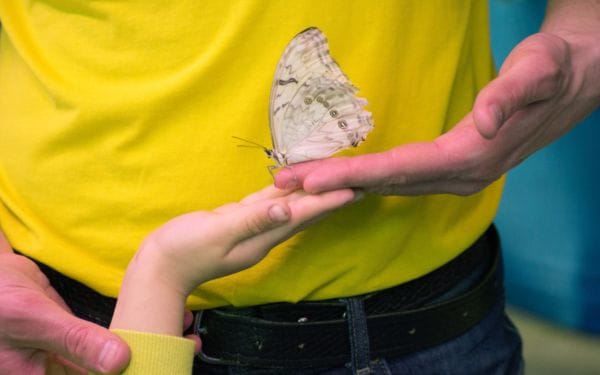February 15, 2021
By Aleta Margolis, Founder and President, Center for Inspired Teaching
Hooray for Monday is a weekly blog filled with questions, ideas, reflections, and actions we can all take to remodel the school experience for students.

A friend of mine, with two young children, is caring for her mother who has recently recovered from Covid and is now living with her family. The grandmother spends most of her time in bed and requires a lot of care. But she shows her love in many ways, including singing to the children, laughing at their jokes, and giving lots of hugs. And according to my friend, the young children adore spending time with their grandma and making her smile.
This got me thinking: What must it be like for these two children growing up in a home where they experience love in so many different ways? Where they provide care as well as receive it? Where their ability to make someone else feel loved is so clear and easy to see?
When we experience love–by giving and receiving it–chemical changes take place in our brain that promote healthy bonding and even increase our capacity for love. The neurological benefits of love are so powerful that they aren’t limited to humans. A number of studies have shown that when humans and dogs gaze into one another’s eyes, oxytocin, a hormone that creates a sense of love and wellbeing, is released in both the human and the dog.
In the immortal words of lyricist Oscar Hammerstein, “Love isn’t love ‘til you give it away.” It’s good for our brains to experience love.

What opportunities do our students have to make someone feel loved? The someone can be a pet or a friend or family member or classmate, or maybe even a teacher. How can we notice these opportunities and elevate them? How can we create more of them for our students? How can we create them for ourselves?
How are you celebrating Valentine’s Day with your students this year? Maybe you’re doing an online or in-person card exchange. Maybe you are inviting students to write poems or draw pictures or make a phone call to someone in their family or in their community. Maybe you’re inviting students to share something they love with the class: a favorite story, a rock collection, a favorite song, a beloved pet. This week’s resources include strategies for teaching students to identify and understand their emotions, and for creating a sense of belonging.
It’s worth considering how love might find its way into our curriculum beyond candy and cards exchanged around February the 14th.
- How can you create opportunities for your students to make someone feel loved?
- How can you enable them to feel the joy that comes from knowing you have the power to make someone feel loved?
- Children, like all humans, move through this world with the ability to show love for others. It’s an inherent capacity. What are we doing as teachers to cultivate that in our students?
- If a two-year-old has the capacity to be the light in someone’s life, then we all have that capacity. What does it take to fuel that light, on Valentine’s Day and every day?
The isolation of our COVID pandemic lives has made the essential more obvious. We need each other. We need opportunities to show and receive love from each other. Kindness and care transcend academic knowledge or skill, but they still benefit from cultivation and opportunities to grow. If all else feels uncertain, let our ability to give, receive, teach, and learn love remain steadfast.
